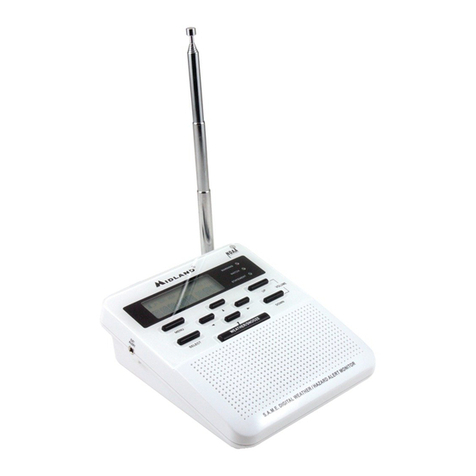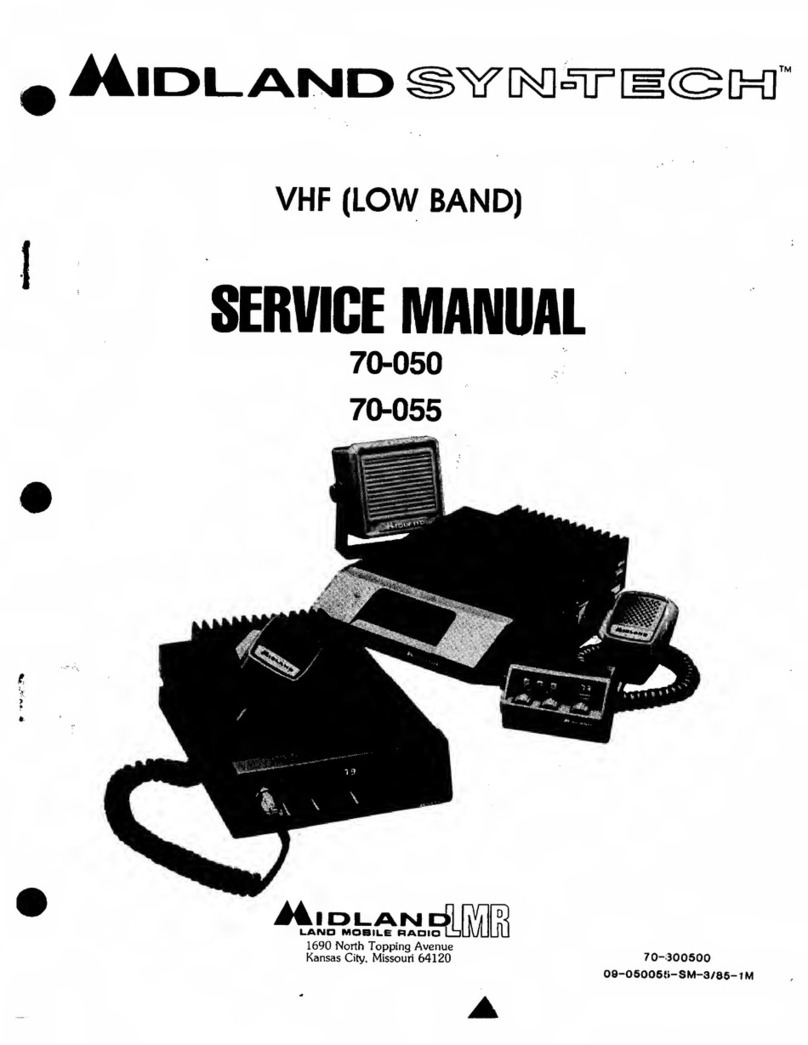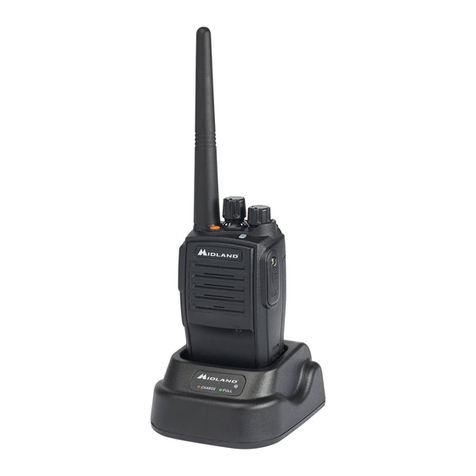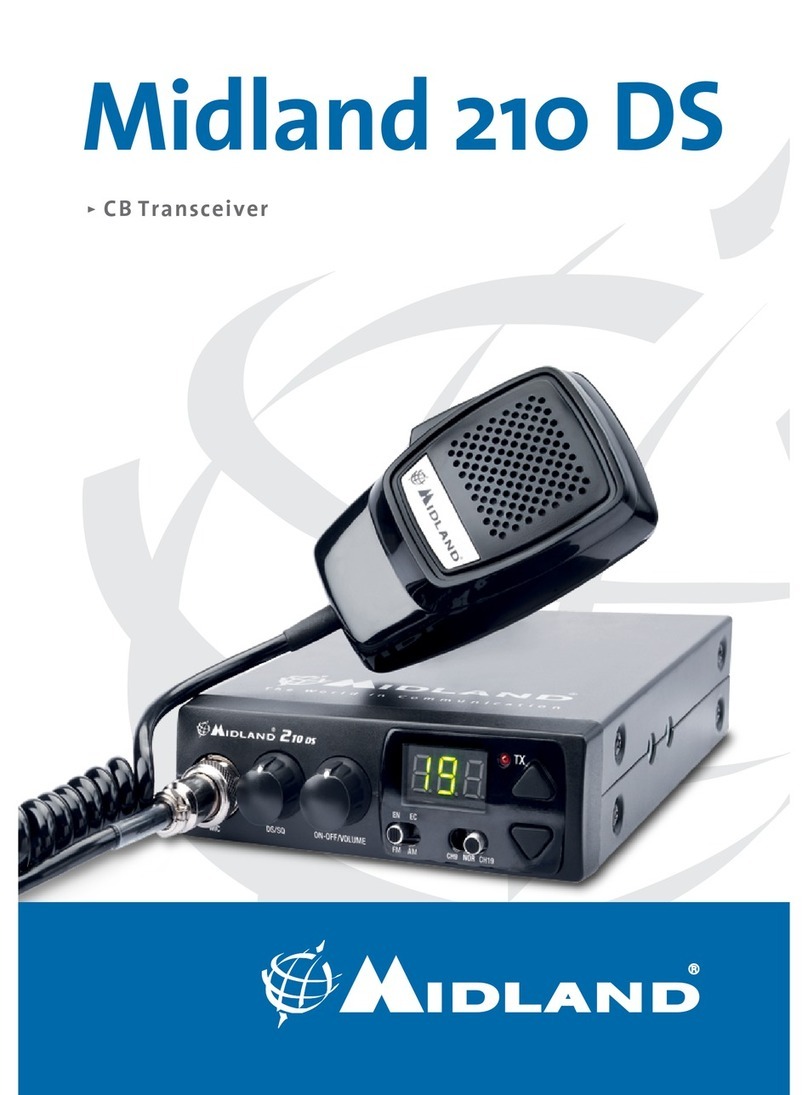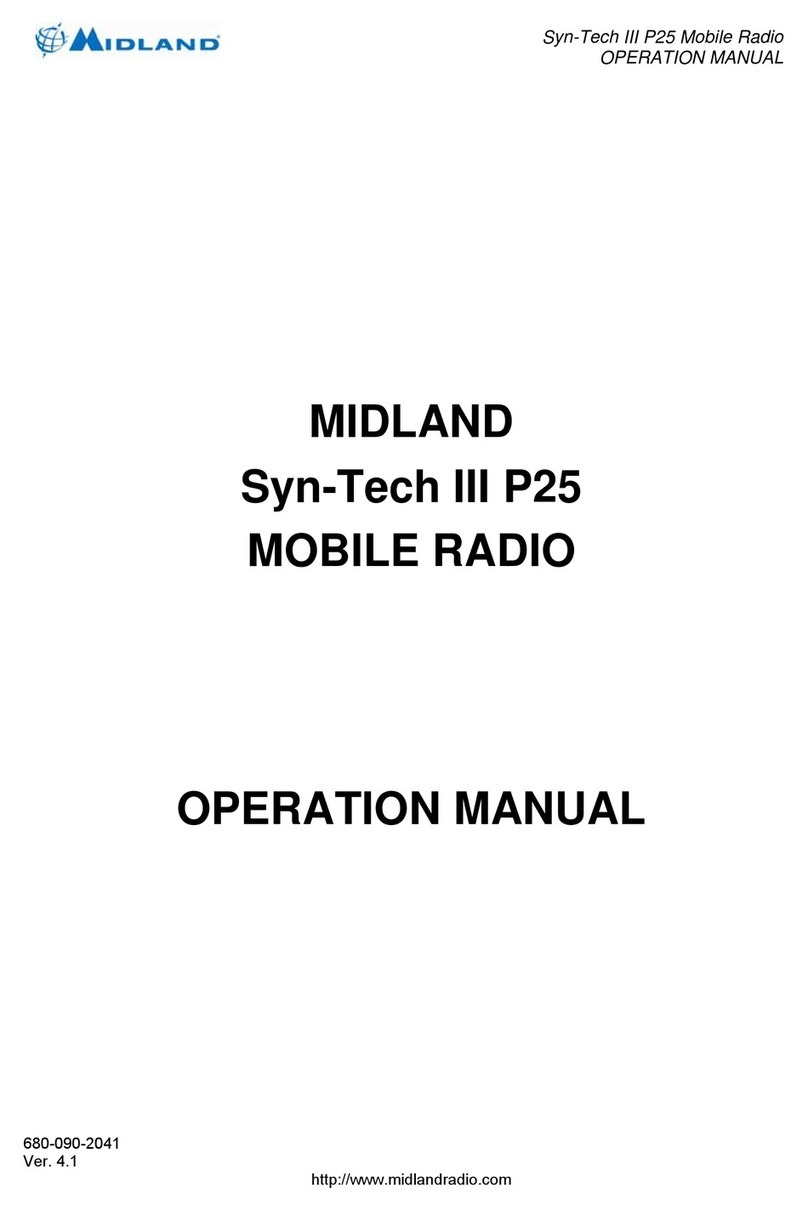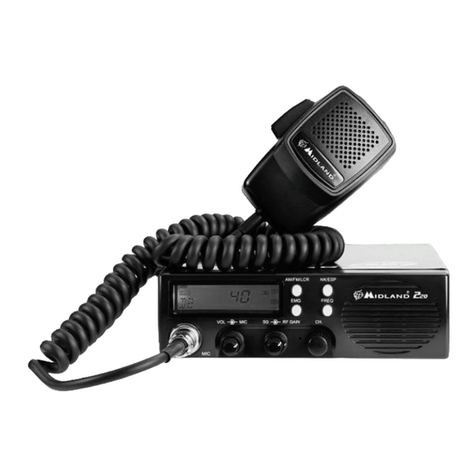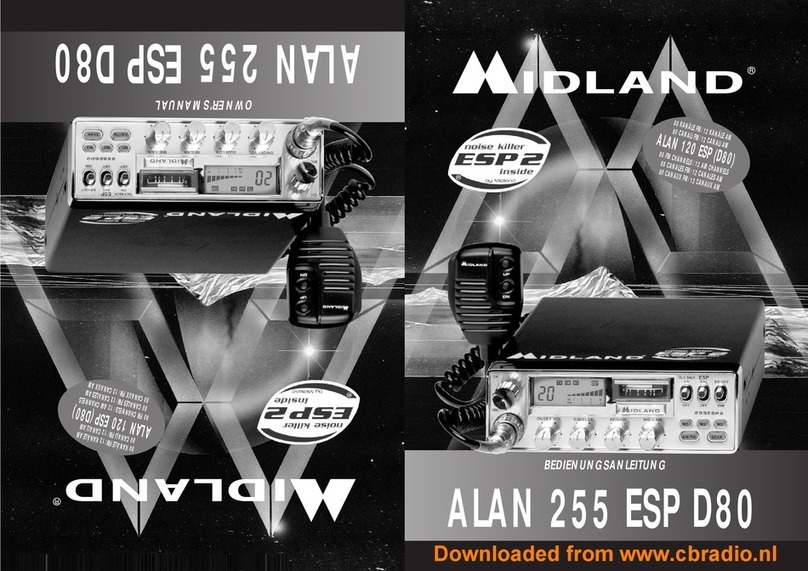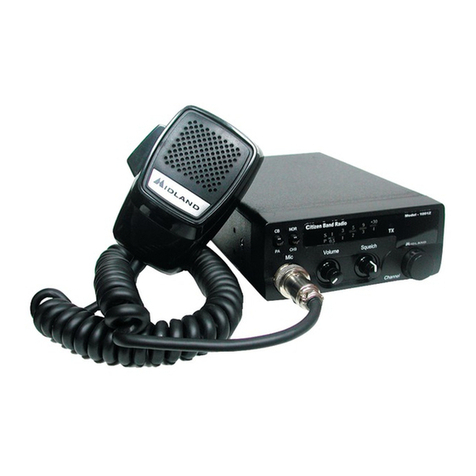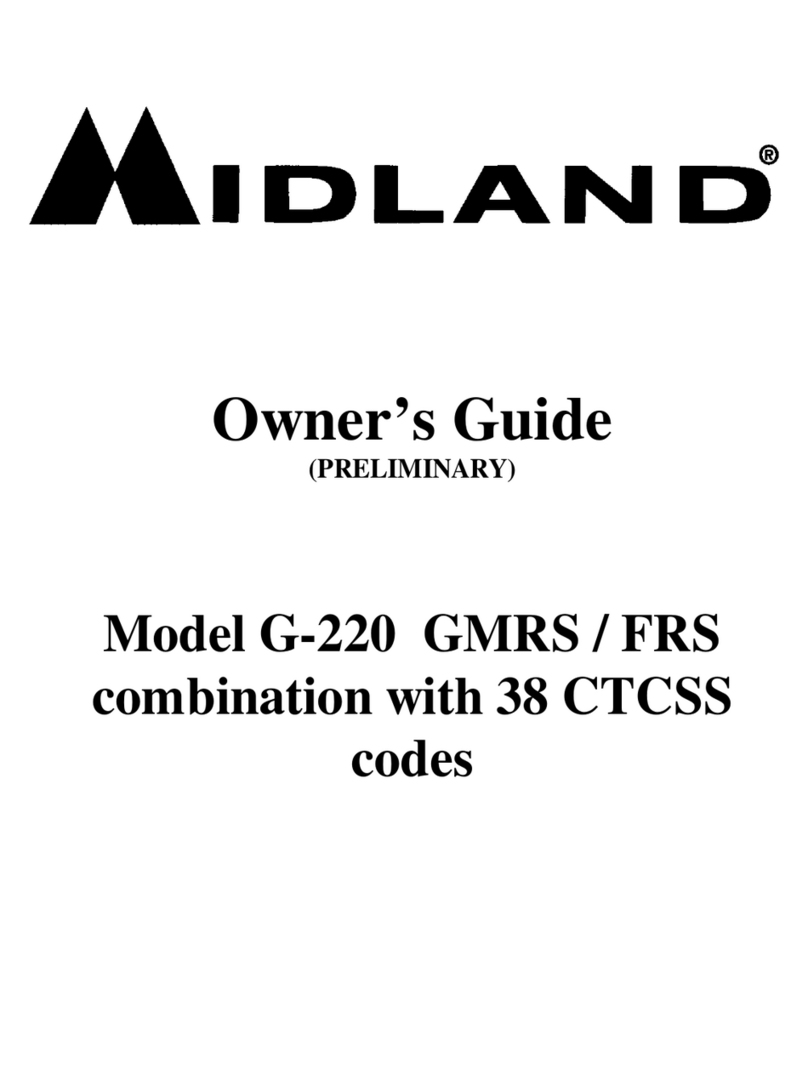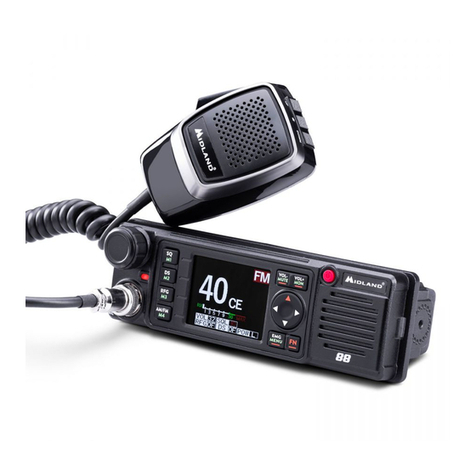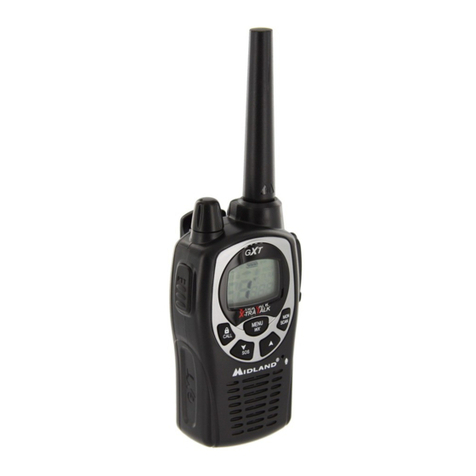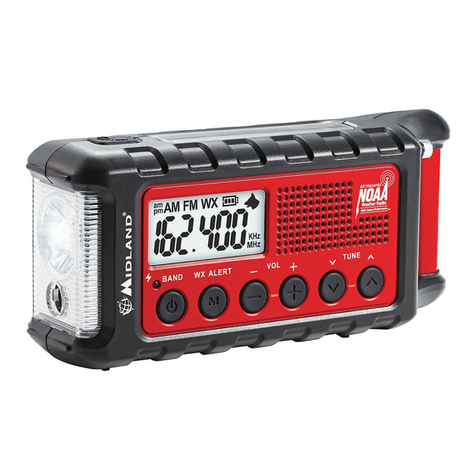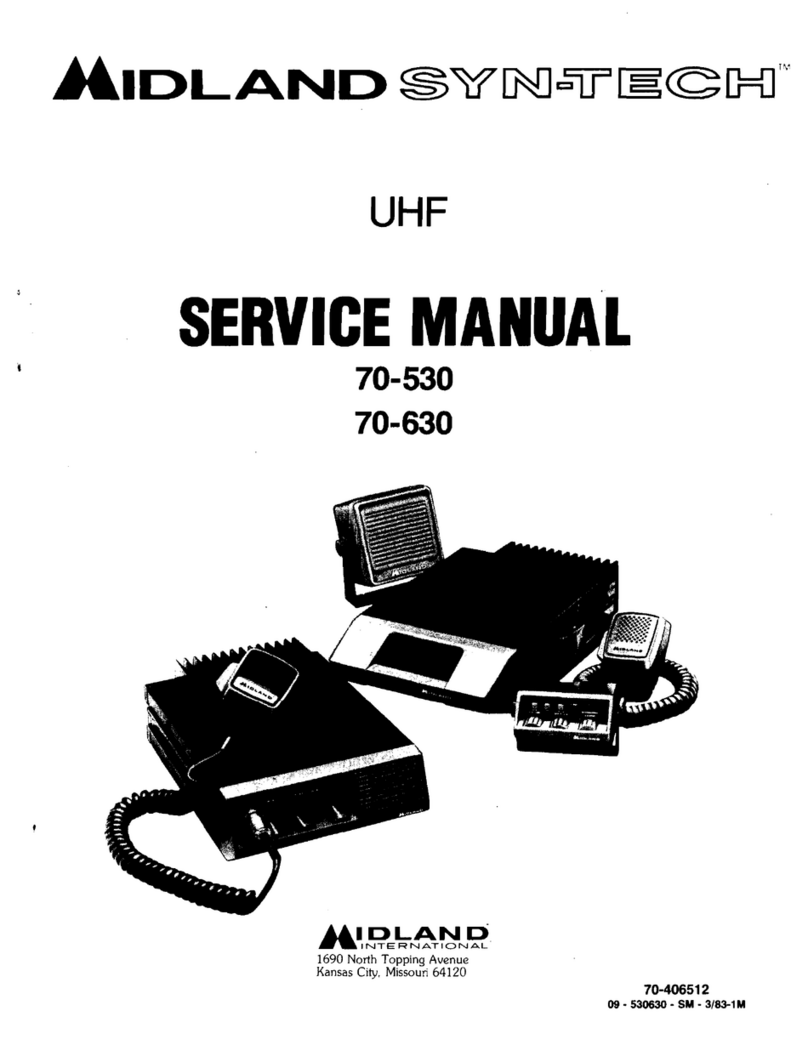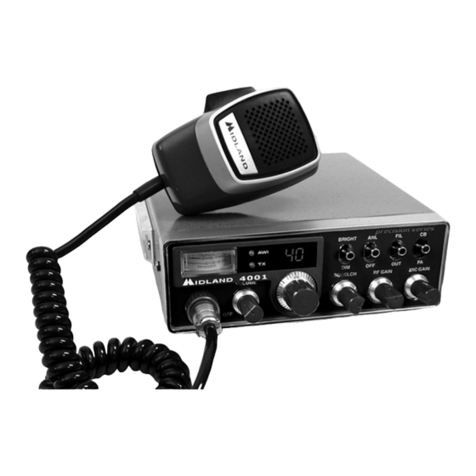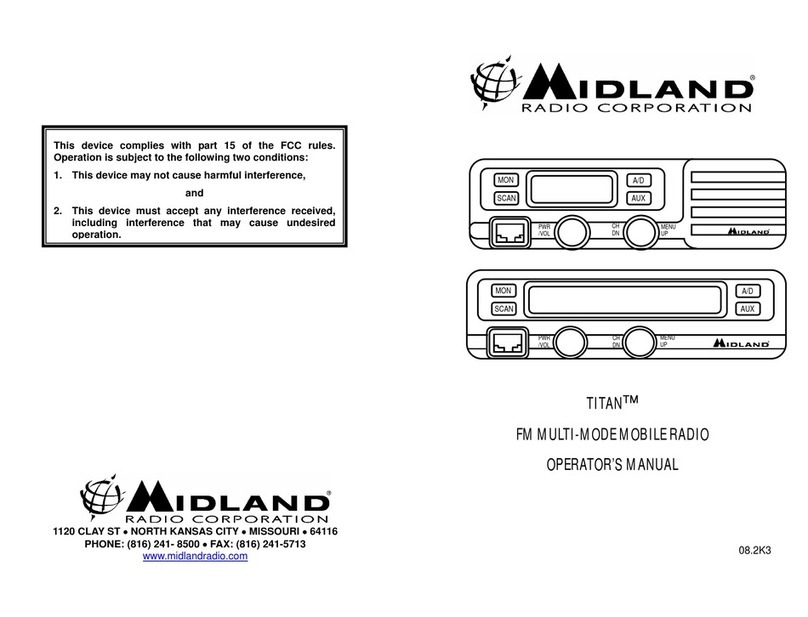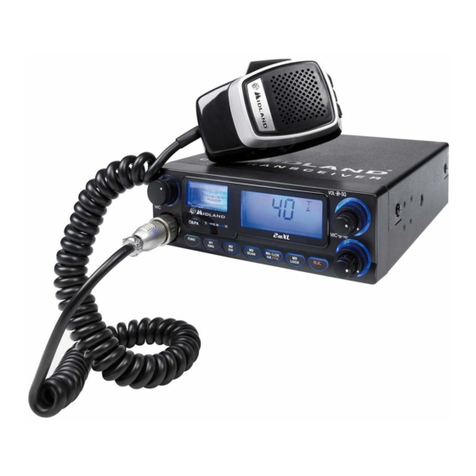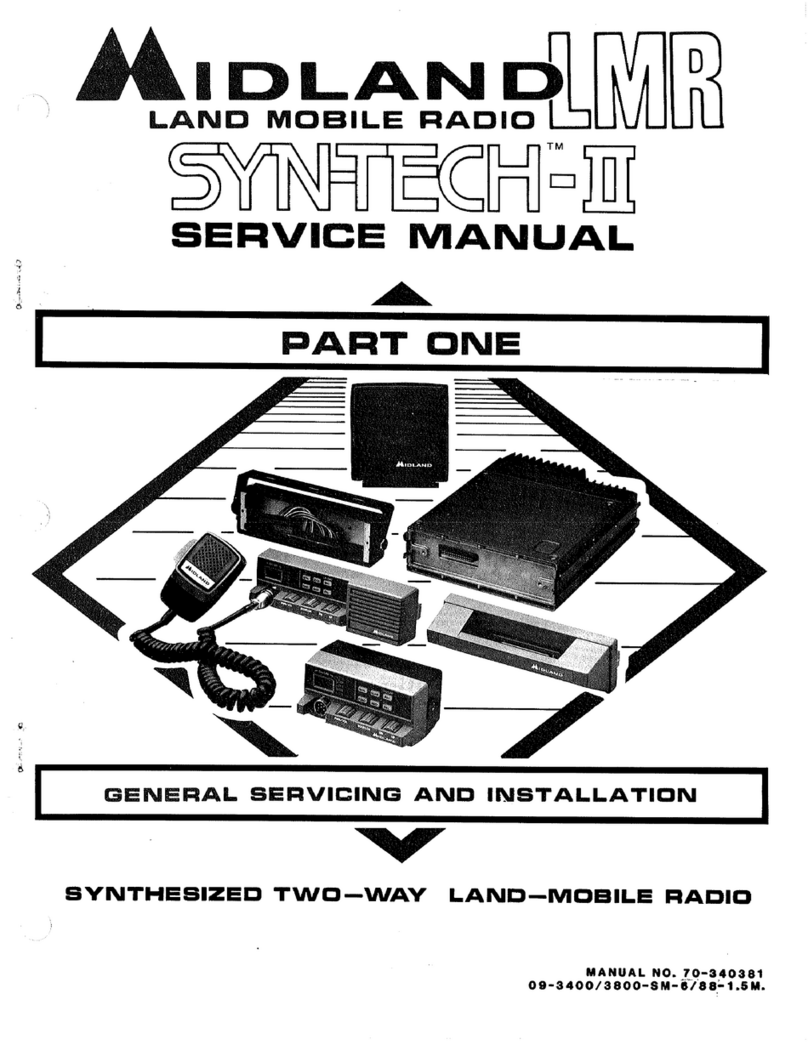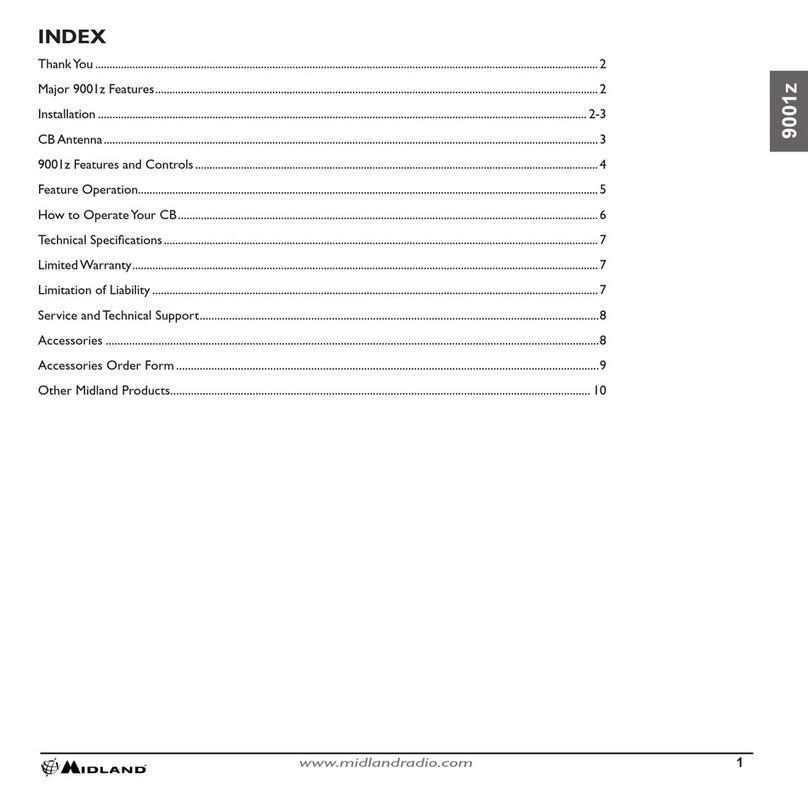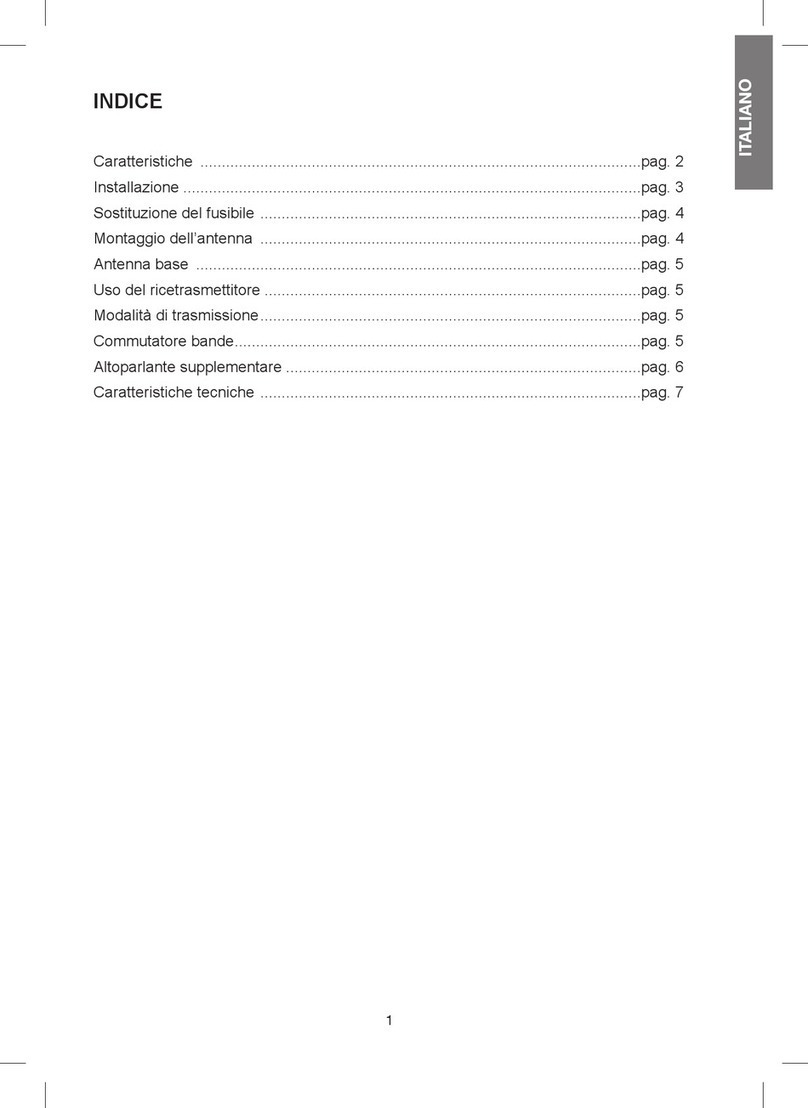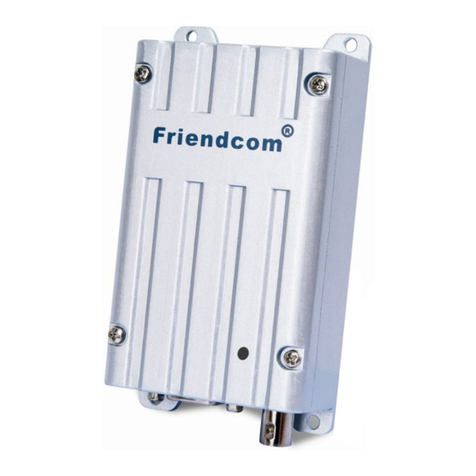ENGLISH
7
OPERATING PROCEDURE TO TRANSMIT
1. Select the desired channel of transmission.
2. Set the MIC GAIN control fully clockwise.
3. If the channel is clear, depress the push-to-talk switch on the microphone and speak in
a normal voice.
RECEIVING SSB SIGNALS
There are four types of signals presently used for communications in the Citizens Band:
FM, AM, USB, and LSB. When the MODE switch on your unit is placed in the AM position,
only standard double-sideband and in FM position, only frequency deviation, full carrier
signals will be detected. An SSB signal may be recognized while in the AM or FM mode by
its characteristic ‘’Donald Duck’’ sound and the inability of the AM or FM detector to produce
an intelligible output. The USB and LSB modes will detect upper sideband and lower
sideband respectively, and standard AM signals. SSB reception differs from standard AM
reception in that SSB receiver does not require a carrier or opposite sideband to produce
an intelligible signal. A single-sideband transmitted signal consists only of the upper or the
lower sideband and no carrier is transmitted. The elimination of the carrier from the AM
signal helps to eliminate the biggest cause of whistles and tones heard on channels which
make even moderately strong AM signals unreadable. Also, SSB takes only half of an AM
channel, therefore two SSB conversations will f t into each channel, expanding the 40 AM
channels to 80 SSB channels. The reduction in channel space required also helps in the
receiver because only half of the noise and interference can be received with 100% of the
SSB signal.
An SSB signal may be received only when the listening receiver is functioning in the same
mode. In other words, an upper sideband signal (USB) may be made intelligible only if the
receiver is functioning in the USB position. If a lower sideband (LSB) signal is heard when
the receiver is in the USB mode, no amount of tuning will make the signal intelligible. The
reason for this may be understood if you consider that when modulation is applied to the
transmitter’s microphone in the USB mode, the transmitter’s output frequency is increased
whereas in the LSB mode the transmitter’s output frequency is decreased. The result in
listening to the receiver is that when the MODE switch is in the proper position (either
USB, or LSB), a true reproduction of single tone of modulation will result, and if the tone is
increased in frequency (such as a low-pitched whistle a high-pitched whistle) you will hear
the increase in the output tone of the receiver.
If the incorrect mode is selected, an increase in tone of a whistle applied to the transmitter
will cause a decrease in the resultant tone from the receiver. Thus when a voice is used in
place of a whistle or tone, in the proper listening mode the voice will be received correctly
whereas in the incorrect mode, the voice will be translated backwards and cannot be
made intelligible by the voice lock control. When listening to AM transmission, a correct
sideband is heard in either mode since both upper and lower sidebands are received.
Once the desired SSB mode has been selected, frequency adjustment may be necessary
in order to make the incoming signal intelligible, the CLARIFIER control allows the operator
to vary frequency above and below the exact-center frequency of the received signal.
If the sound of the incoming signal is high or low pitched, adjust the operation of the
CLARIFIER. Consider it as performing the same function as a phonograph speed control.
When the speed is set too high, voices will be high-pitched and if set too low, voices will
be low-pitched.
Also, there is only one correct speed that will make a particular record produce the same
sound that was recorded. If the record is played on a turntable that rotated in the wrong
